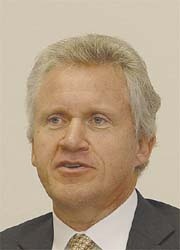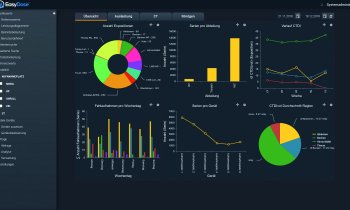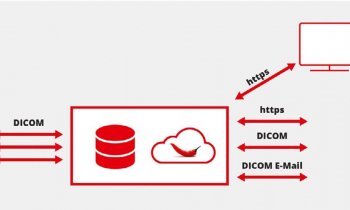Digital networking of four municipal hospital sites in Munich
One of the biggest RIS/PACS healthcare networks in Germany - a Centricity system installed by GE - was recently launched at the Munich Municipal Hospital GmbH to link its 67 clinics and institutes, which are spread across four sites (Bogenhausen, Harlaching, Neuperlach and Schwabing).

With a total of 3,400 beds, the hospital treats about 124,000 in-patients annually; it reported a turnover of ?600 million in 2005.
During a visit to Germany, Jeff Immelt, Chairman of GE’s Board of Directors, ensured he was at this landmark inauguration. His company set up the GE Commercial Centre Germany in Munich in January 2006. In addition, GE has a research centre near the city’s technical university campus in Garching, on the city’s outskirts. The centre is one of only four that are based in various countries around the world. ‘Like some other companies, now we are also a Bavarian medical technology company,’ Jeff Immelt explained, happily. Looking at the size of the project insiders soon realise that there are not many firms that could back up projects of this type with their own products and that could match the success of the new hospital IT installation. Reviewing tenders, this became one of the deciding factors for the Munich Municipal Hospital management, as well as radiologist Prof. Andrea Rieber-Brams, Head of the Department for Diagnostic and Interventional Radiology and Nuclear Medicine at the Neuperlach Clinic, who was directly involved in the decision-making.
‘The Clinic GmbH Munich was only founded in 2005,’ noted Franz Hafner, Head of Finance and Infrastructure at the Munich Municipal Hospital GmbH. ‘That’s why we are particularly pleased that we have managed to implement a modern imaging and diagnostics management system in such a short period of time.’ This new healthcare venture also has to position itself and compete with other university hospitals in the environs, against a difficult background.
‘The investment volume for the innovative IT-infrastructure of the hospital was 5.6 million Euros. The RIS/PACS means a simplified digital storage and management of complex clinical data. All doctors in the clinics within the network can access the same radiology images and results at any time and in any location, to discuss them with specialists in other medical fields and decide on the appropriate therapy as quickly as possible,’ Prof. Rieber-Brambs added.
The clinics do not use X-ray film; the radiologists evaluate images on high-resolution computer monitors.
From the registration of a patient in the X-ray department to the commencement of therapy by the relevant doctor, a hospital working with X-ray films has to carry out a sequence of about 30 individual operations. With a digital RIS/PACS solution that workflow can be reduced to just seven individual steps.
‘The main gain for the Munich Municipal Hospital is the optimisation of patient care. Diseases can be diagnosed faster and the necessary therapies also can commence sooner,’ Franz Hafner added.
15.11.2007











